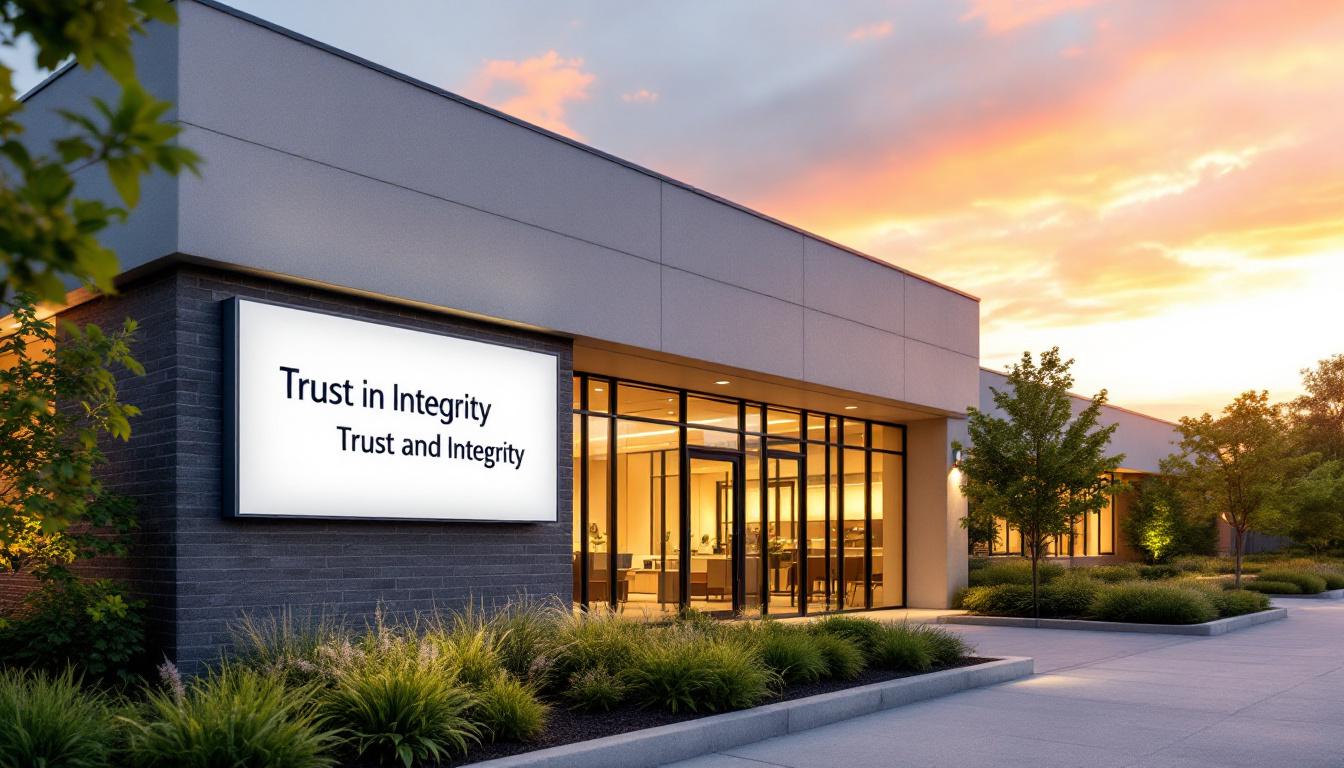How to Optimize for Mobile Video Consumption in Healthcare
Revolutionizing Patient Engagement with Strategic Mobile Video Optimization
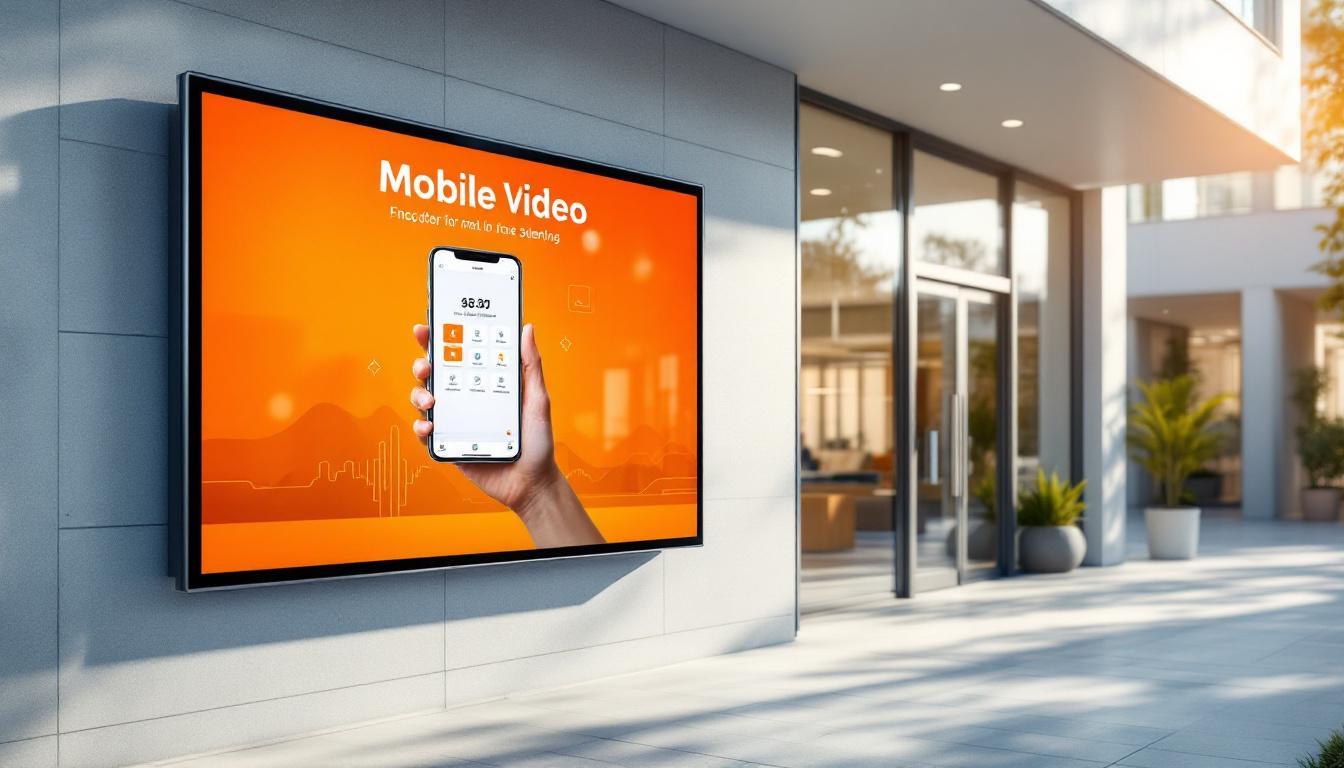

How to Optimize for Mobile Video Consumption in Healthcare
Harnessing Mobile Video to Transform Healthcare Delivery
As digital health continues to evolve, mobile video consumption has become a cornerstone of healthcare communication, education, and service delivery. With over 60% of healthcare-related searches conducted on mobile devices, optimizing mobile video content is crucial for providers seeking to enhance patient outcomes, improve operational efficiency, and expand their reach. This article explores best practices, technological innovations, and strategic approaches to maximize the impact of mobile videos in healthcare settings.
Best Practices for Mobile Video Content Optimization in Healthcare
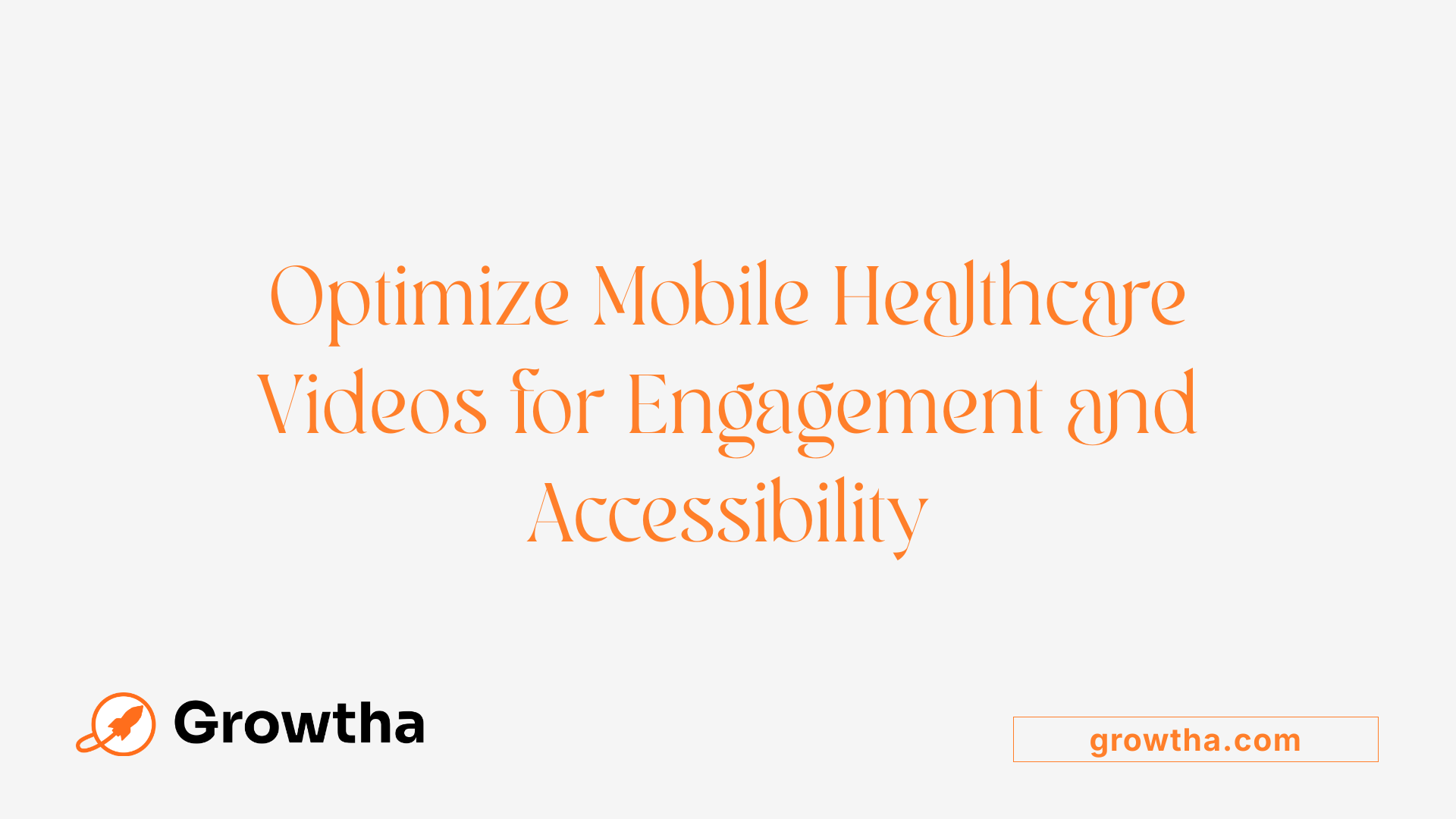
What are best practices and strategies for optimizing mobile video content in healthcare settings?
Optimizing healthcare videos for mobile devices involves multiple strategies to ensure accessibility, engagement, and effectiveness. First, incorporate inclusive features such as captions, subtitles, and audio descriptions. These tools improve accessibility for patients with disabilities and those consuming content in noisy or silent environments. They also fulfill legal standards like ADA and HIPAA compliance.
Next, focus on creating concise and visually clear content. Short, engaging videos with straightforward messaging are easier to digest on small screens. Use high-quality audio and professional editing to ensure clarity, helping viewers understand important health information without distractions.
Utilizing data analytics is crucial. Analyzing viewer engagement and preferences allows healthcare providers to tailor content for specific audiences, whether for patient education, staff training, or marketing. This data-driven approach ensures relevance and increases engagement.
Supporting low-bandwidth environments is also essential. Optimized videos should have efficient compression and adaptive streaming features, allowing users with limited internet speeds to access content without buffering issues. This broadens the reach to underserved populations in remote areas.
Finally, ongoing testing and updates are vital. Regularly review videos across diverse user groups to identify potential barriers or technical issues. This iterative process maintains content effectiveness, enhances user experience, and ensures compliance with accessibility standards.
By adopting these best practices, healthcare providers can effectively leverage mobile videos to improve patient outcomes, educate communities, and enhance overall service delivery.
Enhancing Video Quality and Effectiveness on Mobile Devices
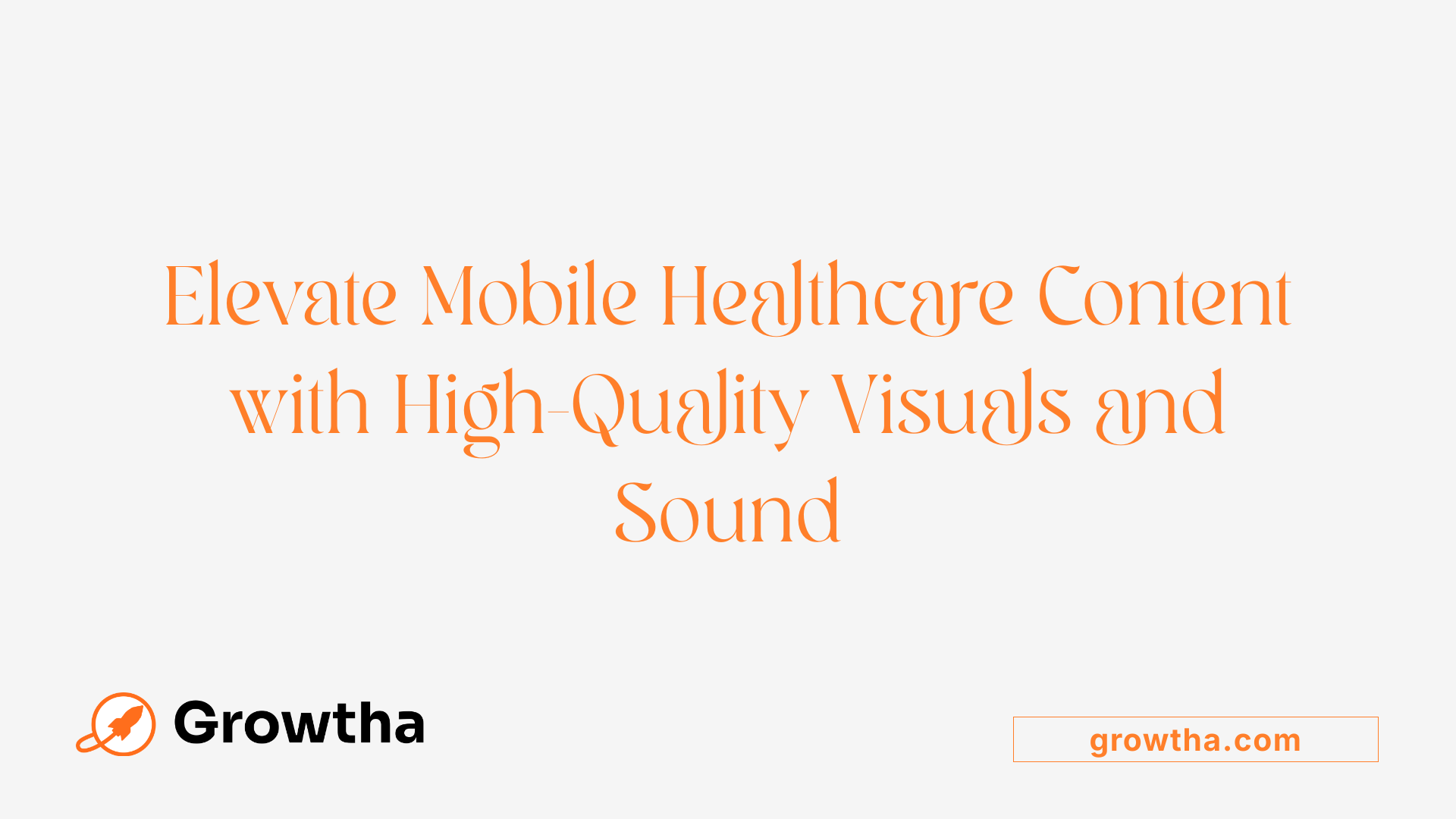
How can healthcare providers improve the quality and effectiveness of videos on mobile devices?
To maximize the impact of healthcare videos on mobile platforms, providers should focus on both technical quality and content engagement. High-resolution visuals and clear, reliable audio are fundamental; these elements ensure that viewers can easily comprehend medical instructions and educational material. Incorporating professional editing and visually appealing animations, such as explainer videos, can simplify complex medical concepts and retain viewer interest.
Tailoring content to meet specific patient needs increases relevance and fosters trust. This involves storytelling techniques, clear visuals, and accessibility features like captions or transcripts to accommodate all users. Ensuring compatibility across various devices and operating systems is essential to reach a broader audience, regardless of the device used.
Advanced encoding methods, especially ROI-based video coding, play a vital role in optimizing streaming quality. These techniques prioritize high-quality delivery in critical regions while reducing bandwidth consumption for less important areas, which enhances the viewing experience in remote or bandwidth-limited settings.
By understanding their audience and aligning videos with healthcare objectives, providers can deliver information that is not only accurate but also engaging and easy to understand. Combining high technical standards with compelling storytelling ensures videos are effective tools in patient education and remote healthcare delivery.
Guidelines to Boost Patient Engagement and Education via Mobile Videos
What guidelines can help healthcare providers enhance patient engagement and education through mobile videos?
To improve patient engagement and understanding, healthcare providers should focus on creating content that is patient-centered and easy to comprehend. Simplifying complex medical information into clear, concise messages ensures that patients grasp essential health topics.
Incorporating engaging visuals, storytelling, and calls to action can make videos more appealing and encourage viewers to take the next steps, such as scheduling appointments or applying health tips.
Personalization plays a vital role; by using targeted messaging and customizing content based on individual patient data, providers can make videos more relevant and effective.
Using teaching tools within mobile health apps, like quizzes or interactive elements, helps reinforce learning and active involvement.
Accessibility and shareability are also critical. Ensuring videos are easy to access on various devices, shareable across platforms, and integrated into mobile health applications keeps patients engaged and informed.
Connecting these videos with electronic health records (EHR) systems allows for tailored educational content aligned with each patient's health status and care plan. This integration supports remote care management and preventive health efforts, fostering stronger communication between patients and providers.
Developing and Implementing Mobile-Friendly Websites and Videos
How can healthcare organizations develop and implement mobile-friendly websites and video content effectively?
Creating a mobile-friendly healthcare website and video content starts with responsive design. This approach ensures that websites automatically adapt to all device sizes, providing a seamless experience whether viewed on smartphones, tablets, or desktops. Responsive layouts help maintain consistent content, images, and metadata, which boosts SEO rankings and builds patient trust.
Optimizing load times is vital for user retention. Techniques such as compressing images to reduce file sizes and minimizing unnecessary scripts help pages load faster. Simple, clear content with large, easy-to-click buttons and straightforward navigation menus make it easier for patients to find information quickly.
Accessibility features are essential to meet legal standards and serve all patients effectively. Including alt text for images, choosing readable font sizes, and designing to ADA compliance ensure content is usable by everyone, including individuals with disabilities.
Incorporating multimedia—like videos, infographics, and engaging visual aids—enhances patient education. Short, informative videos can convey complex health information effectively on mobile devices, increasing engagement.
Lastly, regular testing and updates using tools like Google’s PageSpeed Insights and Mobile-Friendly Test help identify and fix performance issues. Staff training on best practices for mobile content creation and maintenance ensures that websites and videos stay secure, functional, and aligned with evolving patient needs.
Implementing these strategies creates a reliable, accessible, and engaging mobile platform that improves communication, enhances patient experience, and supports healthcare delivery in a digital age.
Technological Innovations Supporting Mobile Medical Video Streaming
What technological approaches and innovative solutions support mobile medical video streaming and content delivery?
Advancements in technology have significantly enhanced the way medical videos are streamed and delivered on mobile devices. Adaptive streaming protocols such as MPEG-DASH and HLS are central to this progress. These protocols dynamically adjust video quality based on real-time bandwidth conditions, ensuring smooth playback even during network fluctuations.
Content Delivery Networks (CDNs) also play a vital role by geographically distributing content to reduce latency and increase availability. This global optimization allows healthcare providers to deliver high-quality video streams efficiently to users regardless of their location.
The rollout of 5G networks marks a breakthrough for mobile medical video applications. With high bandwidth and low latency, 5G facilitates real-time telehealth consultations, remote diagnostics, and live surgical broadcasts, making remote healthcare more practical and reliable.
Multipath protocols like MPQUIC further enhance streaming resilience. By employing multiple network paths simultaneously, these protocols ensure continuous, reliable data transmission even in challenging network environments. For example, combining satellite and cellular links allows seamless video delivery in rural or remote areas.
Introducing Region of Interest (ROI) encoding and leveraging machine learning-based ROI detection systems, such as YOLOv3, enable prioritization of critical medical visuals. AI-based content analysis ensures high-quality transmission of essential data by focusing resources on vital regions of the video, which is crucial during live operations or emergency care.
Mobile-optimized video players, compatible with IoMT (Internet of Medical Things) devices, enable interactive experiences like real-time monitoring and remote consultation. These solutions adhere to strict security and accessibility standards, fostering equitable healthcare delivery.
In combination, these technological innovations transform mobile medical video streaming into a robust, scalable, and secure healthcare tool. They ensure vital visuals reach clinicians and patients reliably, regardless of network conditions, ultimately improving patient outcomes and expanding access to quality healthcare services.
Measuring and Enhancing the Impact of Mobile Healthcare Videos
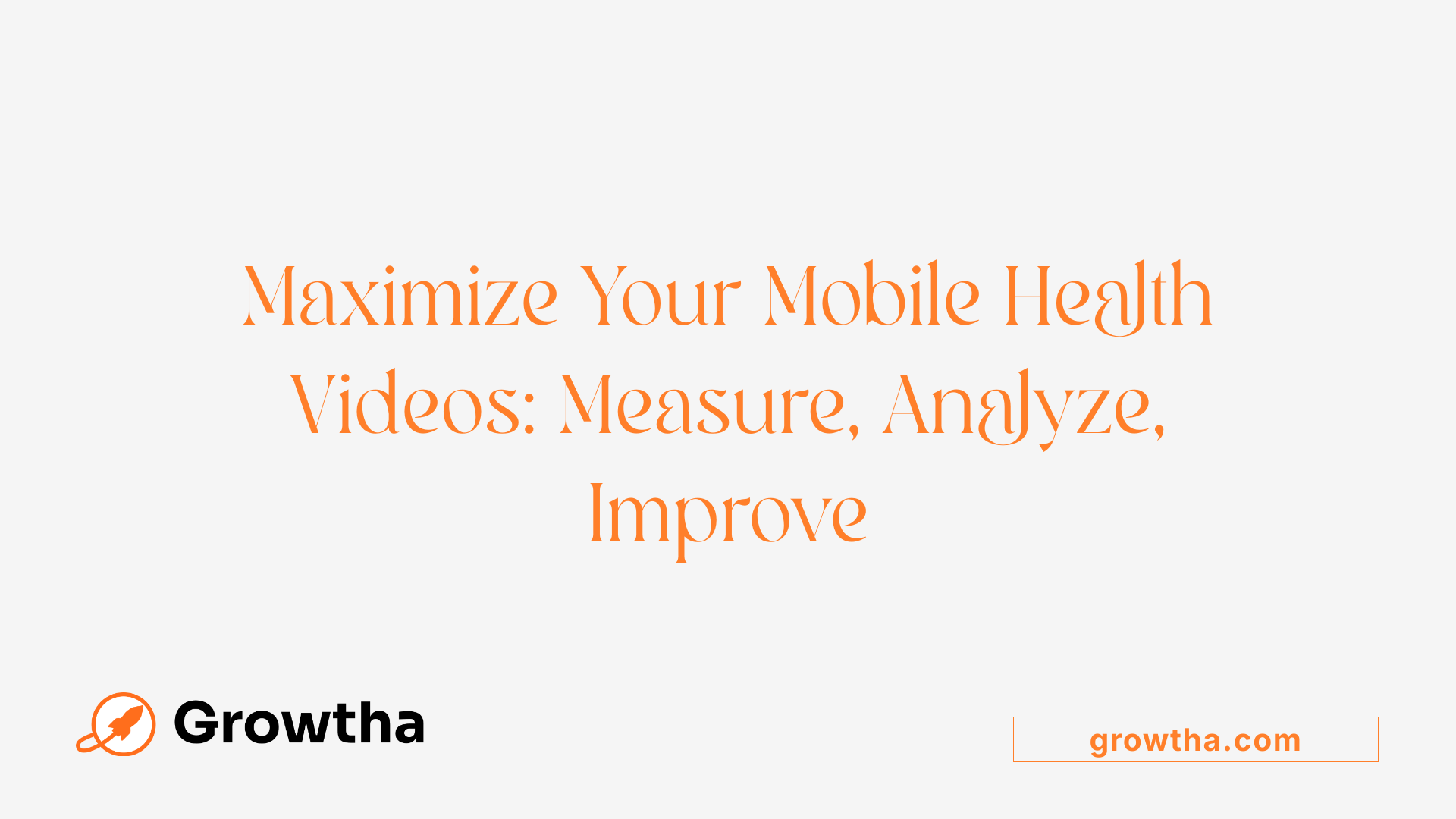 Healthcare providers aiming to improve their mobile healthcare videos should incorporate multiple evaluation methods to gauge effectiveness accurately. Standardized assessments like the Mobile App Rating Scale (MARS) allow for comprehensive evaluations of content quality, usability, and engagement. The App Behavior Change Scale (ABACUS) offers insights into how well the content promotes behavioral modifications, while the DISCERN tool helps assess information reliability and treatment choices.
Healthcare providers aiming to improve their mobile healthcare videos should incorporate multiple evaluation methods to gauge effectiveness accurately. Standardized assessments like the Mobile App Rating Scale (MARS) allow for comprehensive evaluations of content quality, usability, and engagement. The App Behavior Change Scale (ABACUS) offers insights into how well the content promotes behavioral modifications, while the DISCERN tool helps assess information reliability and treatment choices.
Beyond content quality, measuring tangible health outcomes is essential. Tracking clinical metrics such as blood pressure, blood glucose levels, weight, and physical activity or dietary scores can demonstrate direct health improvements attributable to the videos. Monitoring these outcomes over time provides evidence of real-world impact.
Engagement analytics play a vital role as well. Analyzing metrics like total views, average watch duration, shares, and login frequency reveals how users interact with the videos. Identifying points where engagement drops can guide content refinement to retain viewer interest and improve effectiveness.
Qualitative feedback through patient satisfaction surveys offers valuable insights into how viewers perceive the videos. Participants’ perceptions of usefulness, clarity, and relevance can highlight areas for enhancement.
Finally, integrating innovative tools such as AI-based risk prediction models—like those utilized in the WARIFA project—along with long-term follow-up studies, allows providers to assess sustained behavior change and long-term health outcomes. Employing these comprehensive measurement strategies ensures that mobile healthcare videos truly support patient well-being and can be continuously optimized for greater impact.
Addressing Challenges in Mobile Video Consumption in Healthcare
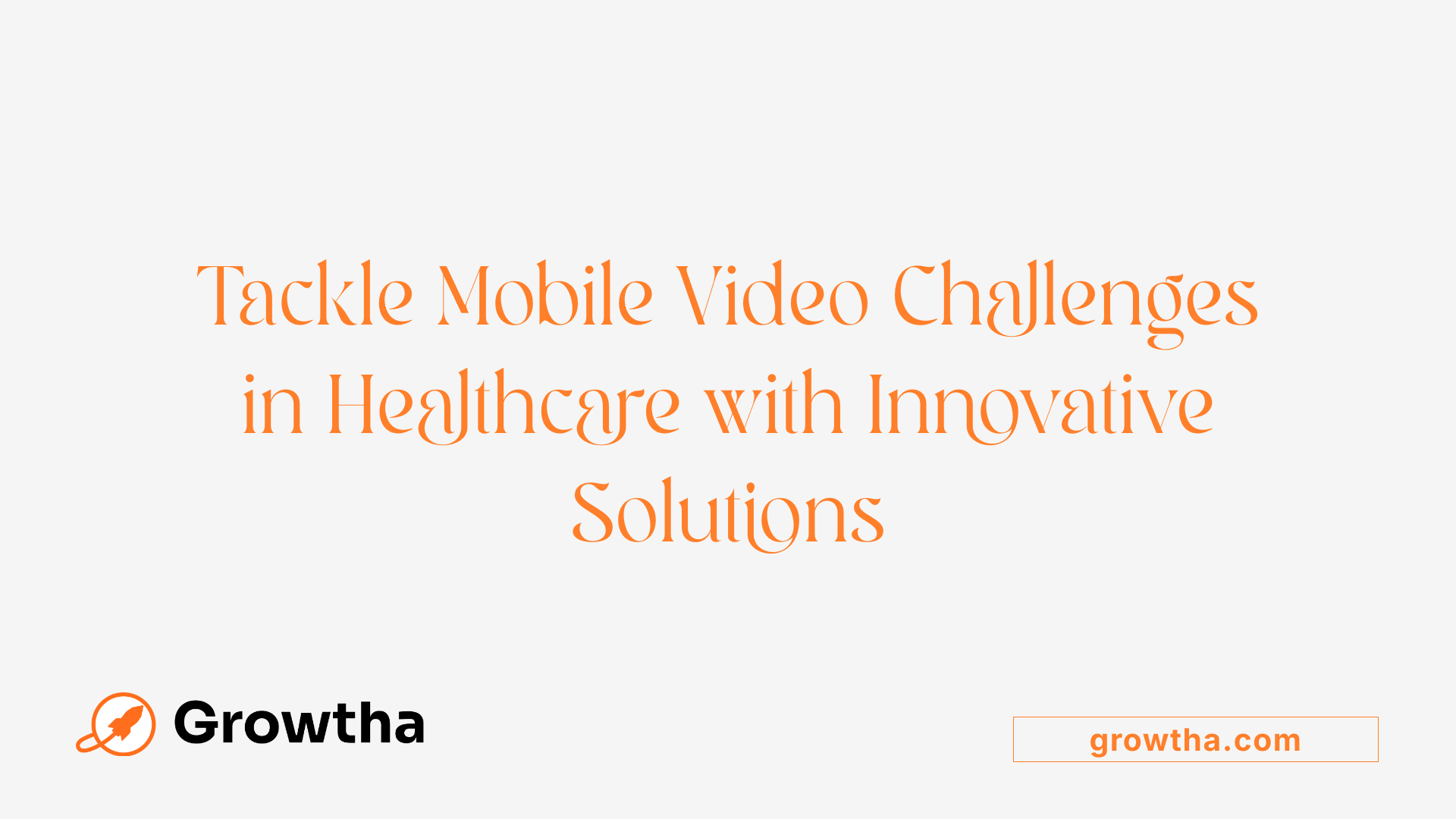
What challenges are associated with mobile video consumption in healthcare and what solutions exist?
Mobile video consumption in healthcare faces several hurdles that can hinder effective communication and engagement. Connectivity issues and device compatibility are primary concerns, as inconsistent internet access or outdated hardware can disrupt video delivery. Ensuring user engagement and privacy also poses challenges, especially when sharing sensitive health information.
Maintaining high-quality streaming across different environments remains a significant obstacle. Variations in network reliability and device capabilities can lead to buffering, low-resolution images, or interrupted sessions. Additionally, optimizing video files for faster loading while ensuring robust security is crucial to protect patient data.
To overcome these challenges, healthcare providers implement multiple solutions. Compressing video files helps reduce load times without sacrificing visual quality. Utilizing secure, HIPAA-compliant platforms ensures privacy and data protection, often through encryption and secure authentication methods.
Designing interfaces that are user-friendly and culturally sensitive enhances engagement, making content accessible and respectful of diverse patient populations. Employing web standards such as HTML5 and JavaScript allows for scalable, cross-platform compatibility, ensuring videos function seamlessly on a variety of devices.
Furthermore, integrating videos into broader digital workflows through embedded content and preloading techniques improves accessibility and reduces delays. Tailoring video scripts to specific health messages ensures clarity and relevance, making videos a powerful tool for effective healthcare communication.
Continuous Improvement Through Evidence-Based Strategies
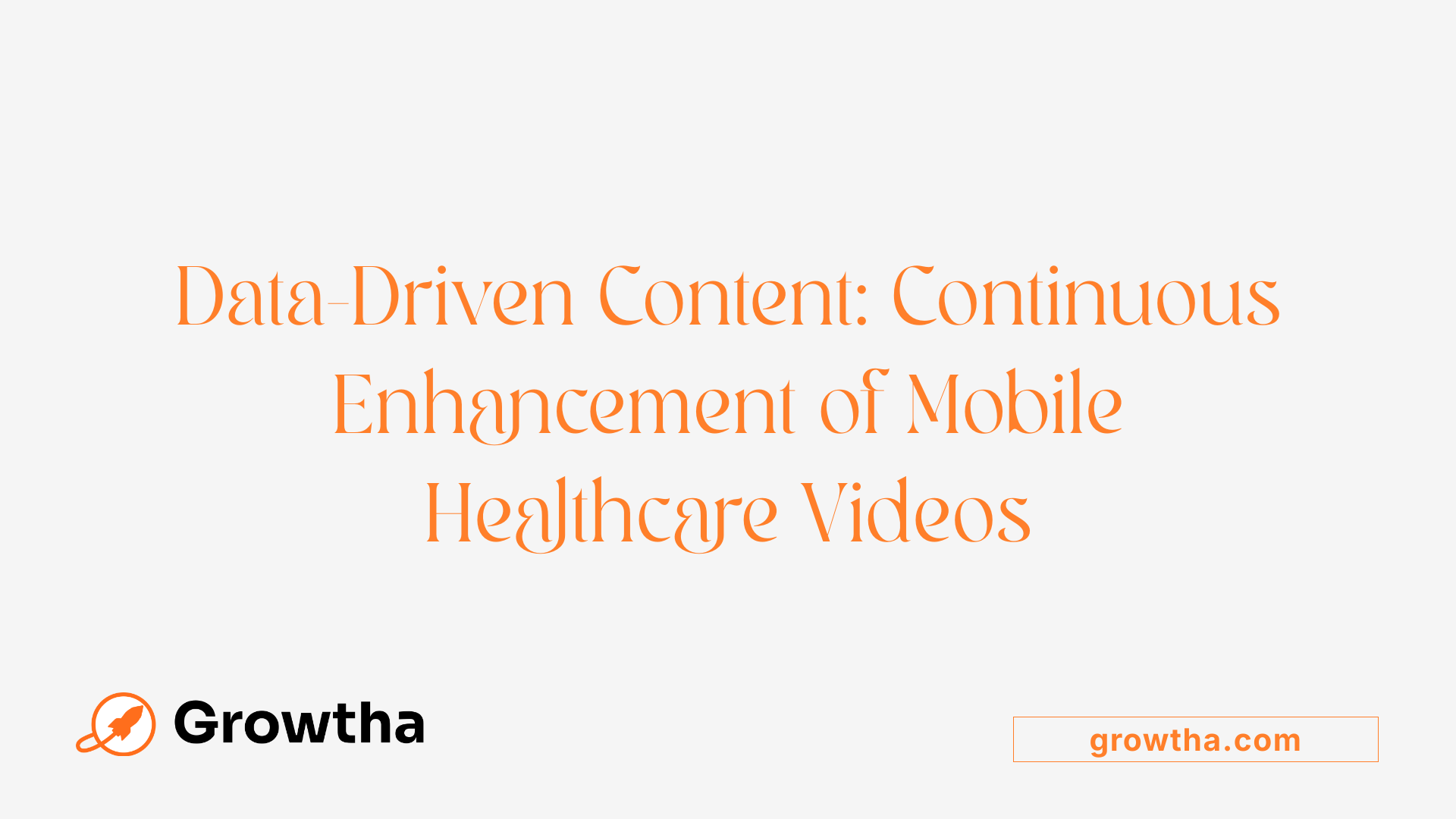
What evidence-based approaches are recommended for the continuous improvement of mobile healthcare video experiences?
To enhance the quality and effectiveness of mobile healthcare videos, practitioners should adopt strategies rooted in solid evidence and ongoing evaluation. Integrating clinical guidelines and health standards ensures that video content remains accurate, reliable, and aligned with best practices, maintaining safety and credibility.
Another essential approach involves collecting and analyzing feedback from patients and community members. This input helps identify areas for improvement, addresses user concerns, and tailors content to meet the needs of diverse populations.
Applying behavioral science principles is also beneficial. Techniques such as using compelling messaging, gamification, and motivational cues can increase viewer engagement, promote compliance with health recommendations, and foster positive behavioral change.
Implementing iterative testing methods, like pilot studies and phased rollouts, allows healthcare providers to test new features or content, evaluate their impact, and make data-driven adjustments before wide deployment.
Finally, leveraging analytics—such as usage data, engagement metrics, and health outcome measurements—enables continuous monitoring, assessment, and targeted refinement of video strategies. This data-driven approach ensures that video interventions remain effective, user-friendly, and aligned with evolving healthcare needs.
In summary, combining clinical standards, community insights, behavioral science, iterative testing, and data analytics creates a robust framework for the ongoing improvement of mobile healthcare videos, ultimately leading to better patient engagement and health outcomes.
Empowering Healthcare with Mobile Video Optimization
Optimizing mobile video consumption in healthcare is not a one-time task but an ongoing process that integrates technological advancements, user-centered design, and evidence-based practices. Embracing adaptive streaming, accessibility standards, and emerging AI innovations ensures content remains high-quality and engaging regardless of device or network conditions. By continuously monitoring engagement metrics, soliciting patient feedback, and aligning video content with clinical guidelines, healthcare providers can significantly improve patient education, compliance, and outcomes. The digital transformation in healthcare, driven by strategic mobile video optimization, promises a future where accessible, reliable, and impactful health communication enhances the quality of care and reduces disparities across diverse populations.
References
- Mobile SEO Action: Best Ways To Optimize Healthcare Sites
- How to Improve Your Video Quality in Healthcare: Simple Tips for ...
- Best Practices for Optimizing Digital Healthcare Experiences
- Role of Mobile Optimization in Digital Marketing in Healthcare | Mirra
- Healthcare Marketing and Using Instagram Videos to Connect
- Enhancing real-time mobile health video streams: A cross-layer ...
- Maximizing Efficiency: A Guide to Mobile Healthcare Practice ...
- The Importance of Mobile-Optimized Websites for Medical Practices
- Healthcare Explainer Videos: Boost Patient Engagement - Digital Brew
- Enhancing real-time mobile health video streams: A cross-layer ...





